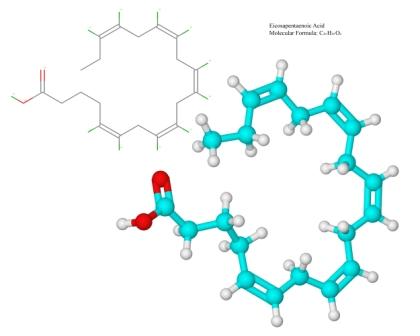The quick take
EPA and DHA are the two heavy-hitters of omega-3s, but they don’t do the same jobs. Your ideal mix shifts across life stages and with specific health goals. Understanding what each does, where it comes from, and how to combine them helps you get more from every gram.
EPA vs DHA: different roles, different outcomes
What they are
-
EPA (eicosapentaenoic acid): A signal-modulating omega-3 that helps regulate inflammation, mood, cardiovascular health, and cellular stress responses.
-
DHA (docosahexaenoic acid): A structural omega-3 that concentrates in brain, eyes, and nervous tissue, supporting development, membrane fluidity, and visual function.
Where you get them
-
Oily fish & seafood (salmon, sardines, mackerel) = richest source of both.
-
Algae oil = vegan source of DHA (some products now include EPA).
-
Plant ALA (flax, chia, walnuts) converts poorly to EPA/DHA—think “nice to have,” not a replacement.
Why ratios matter
“Omega-3” isn’t one thing. Therapeutic uses often target an EPA-leading, DHA-leading, or balanced profile depending on the goal (e.g., mood vs. pregnancy vs. general wellness).
Life-stage guide: how to prioritize EPA and DHA
Pregnancy & breastfeeding: DHA-forward
-
Why: Baby’s brain, retina, and nervous system rapidly incorporate DHA; mom supplies it.
-
How to aim: Emphasize DHA (with some EPA) via 2–3 servings/week of low-mercury fatty fish or a prenatal DHA (algae or fish oil). Continue through lactation.
-
Bonus: EPA supports mom’s cardiovascular and inflammatory balance while DHA builds baby’s tissues.
Infancy to age 5: DHA-focused foundation
-
Why: Ongoing brain/visual development still leans on DHA.
-
How to aim: Ensure DHA is present (through breast milk/formula or diet).
-
Exception: For developmental concerns, research often uses EPA-dominant formulas to support cognition/behavior—work with a clinician.
School age through mid-life (≈5–65): EPA-dominant for day-to-day needs
-
Why: Structural growth slows; needs shift toward inflammation control, attention, mood, skin, joints, and heart.
-
How to aim: Favor EPA-rich fish oils and regular seafood intake. Many adults feel best on an EPA-leaning or balanced blend.
-
Signals you may benefit from EPA emphasis: Low mood, focus/attention issues, dry/irritable skin, exercise-related soreness, high stress load.
Later life & healthy aging: EPA first—plus DHA for structure
-
Why: EPA helps maintain cognitive function by supporting vascular and inflammatory balance.
-
If cognitive decline is present: Keep EPA high, but do include DHA (e.g., ≥250 mg/day within your total) for neuronal membrane support.
Practical targets & smart ratios (food first, supplements as needed)
Easy starting points
-
General wellness: 250–1,000 mg/day combined EPA+DHA (balanced or slightly EPA-leaning).
-
Mood/attention/inflammation goals: Consider EPA-dominant (e.g., 2:1 or 3:1 EPA:DHA).
-
Pregnancy/lactation: DHA-forward (often 1:2 EPA:DHA or a dedicated prenatal DHA with some EPA).
-
Vegan/vegetarian: Use algae DHA; if possible, choose formulas that add EPA.
Tip: Think in weekly totals if that’s easier—2–3 fatty-fish meals usually covers basics for many people.
Food ideas that hit both EPA & DHA
-
Salmon, sardines, mackerel, trout, herring
-
Tinned fish (fast, affordable, travel-friendly)
-
Algae-based omega-3s for plant-based eaters
FAQs
Can I rely on flax/chia (ALA) alone?
Not for targeted outcomes. ALA conversion to EPA/DHA is limited. Keep ALA foods for overall diet quality, but include marine or algae EPA/DHA for proven benefits.
How do I know if my mix is working?
Consider a red-blood-cell omega-3 test (Omega-3 Index) and retest in ~3 months—that’s how long it takes cell membranes to reflect your intake.
Is more always better?
No—match form and ratio to your goal and stay within sensible ranges unless supervised by a clinician, especially if you’re on anticoagulants or have a bleeding disorder.
Bottom line
-
DHA builds brains and eyes; EPA fine-tunes signals.
-
Your ideal EPA:DHA shifts with age and aim.
-
Food first, supplement intentionally, test and tweak.
Use the right omega-3 at the right time and you’ll get far more from every capsule—or every bite of fish.




